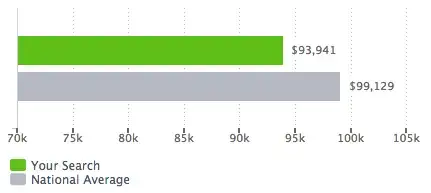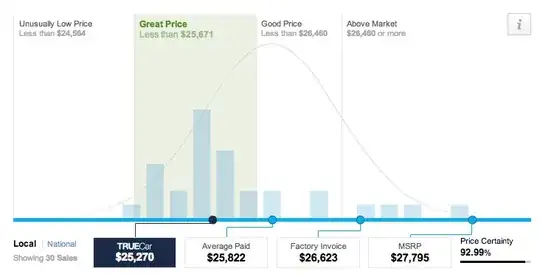I'm looking for a visually compelling yet immediately understandable way to visualize a range of data (min, median, max)
Considerations:
- The approach should be understandable to a wide variety of people
- Ideally, would allow for the comparison to another set of data
- Ideally, will work okay or both high and low N cases
What new ways can you think of to visualize this type of data?
Here are some examples:
Example 1: Here is how a range of data and a comparison is displayed on Glassdoor:

Example 2: Here is how a range of data and a comparison is displayed on Indeed:

Example 3: Here is another very similar example from CareerBuilder:

Example 4: and Trucar's visualization of a range of data (car prices paid by many users).
This is likely pushing the realm of understandability by an average audience.
